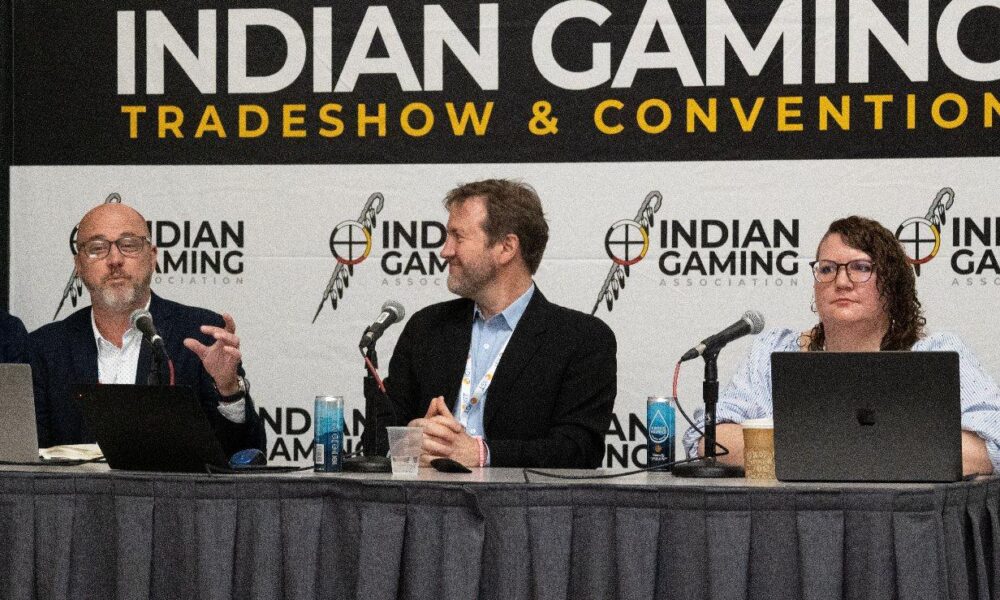At the Indian Gaming Tradeshow & Convention in San Diego, panelists gathered to share real-time strategies, upcoming innovations, and grounded advice during the session “Casino Loyalty 2.0: Emerging Trends and Winning Strategies.” The discussion, moderated by Chad Germann, CEO of Red Circle Agency, focused on what’s working now, what’s coming next, and what the panelists would prioritize if they owned a casino.
What is working now
Andy Parnell, president of LT (formerly LaneTerralever), said that while loyalty tools have evolved, core guest experience still dominates.
“In our latest data, it remains number one on the list. Seventy-nine percent of all players say good customer experience can help a small casino win over a larger casino,” he said. “That doesn’t take a big bottom line. That’s training and making sure everyone understands your brand and expectations.”
Parnell also highlighted the need for a strong omnichannel approach.
“Your older longtime guests might still want to go to the desk and talk to a host, but younger demographics are increasingly relying on digital tools. You have to be present on every channel, because generations consume differently.”
Mary Kilmer, VP of client services at Red Circle, pointed out that many properties don’t give players enough milestones within a tier.
“Somebody earns 50,000 points and the next tier might be 100,000. That gap is too big. If you create steps at 60,000, 70,000 and 80,000, it gives every player a next carrot,” she said.
She added that loyalty programs should also consider time as a factor in engagement.
“Time and money aren’t endless. If your grab-and-go place is known for a take-and-bake lasagna and a player knows they can skip grocery shopping, you just gave them time back. That time could be spent on your floor.”
Joe Kustelski, co-founder of Chalkline Sports, emphasized the value of localized digital promotions. “Our single biggest day of engagement is the first Thursday of March Madness. It makes sense. People are tuned in and properties that lean into local teams like the Jayhawks see great results.”
He added, “Players who engage with digital promotions are six times more valuable than those who only engage in retail. That’s a real opportunity.”
What’s next
Kustelski believes that loyalty must begin before a guest even arrives.
“If I book a room, why can’t I sign up for the loyalty program and start earning points right away? That’s where it’s headed.”
Parnell backed this with data, noting that 76 percent of executives plan to increase budget in digital platforms over the next two years. “Seventy percent of that will go to portals and apps, followed by email, SMS, and social. There’s a real investment happening,” he said.
The panel agreed that artificial intelligence will play a growing role, especially for smaller operators.
“A lot of larger competitors are afraid of AI. That’s an advantage for smaller casinos who are willing to try,” Parnell said. “Start small, pick one department, and build governance around it.”
He cited a case where a casino used a conversational AI bot named Vicki to reach 70,000 players in 30 minutes.
“They saw a revenue increase in the upper 20 to 30 percent range within the first month,” he said.
If they owned the casino
When asked what they would do if they were in charge, Kilmer said she would start with clear measurable goals.
“We talk about getting people to visit three times. But if you don’t incentivize the second visit right after the first, you lose momentum,” she said.
Kustelski added, “Every promotion should be designed to drive the next visit. That’s the metric. If it doesn’t do that, rethink it.”
Parnell said he would over-invest in non-gaming amenities. “Ninety-one percent of people visit a casino with at least one friend. You need options for everyone, not just the gambler.”
From loyalty tiers to digital innovation, the panelists emphasized that success lies in consistent delivery, localized strategy, and a willingness to start small and adapt.




